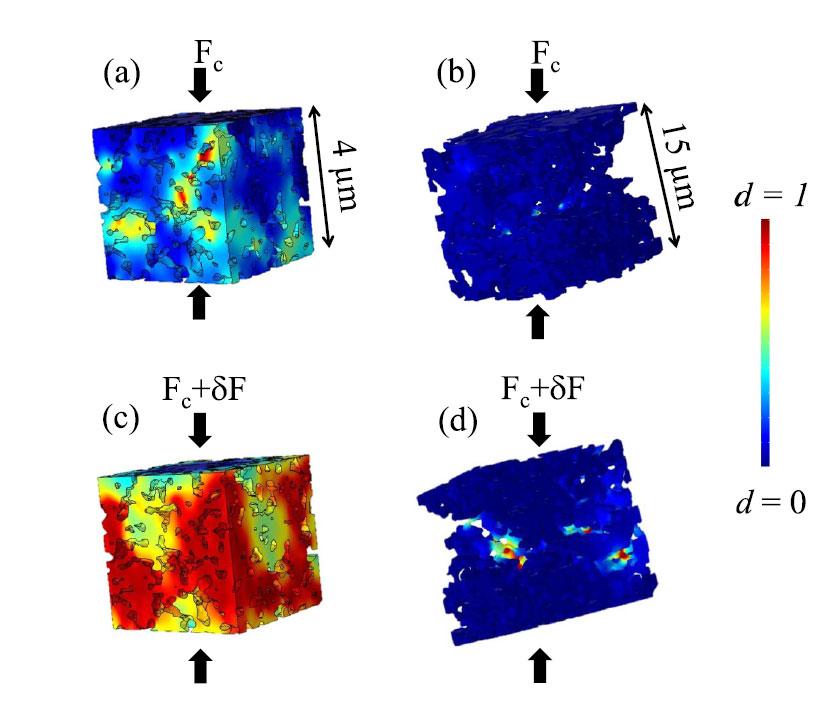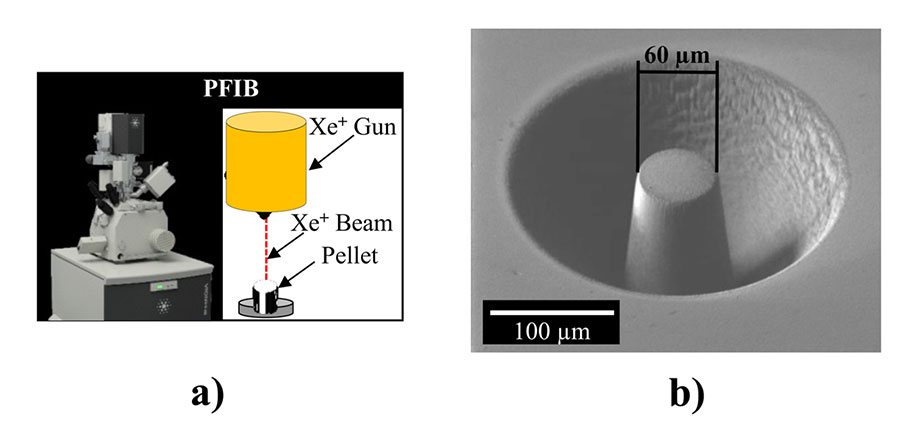As a key driver of the energy transition, hydrogen has the capacity to curb the greenhouse gas (GhG) emissions of hard-to-abate sectors like heavy transportation and certain industries—but only if the hydrogen is produced using decarbonized processes. High-temperature electrolysis, or HTE, can produce this green hydrogen using renewably-produced electricity or nuclear energy as its primary fuel. It also has the added advantage of delivering higher yields than other hydrogen production methods.
At the center of the technology: the solid-oxide electrolyzer cell, or SOEC. These electrochemical systems take the form of "stacks" in which the denser ceramic electrolyte is sandwiched between two porous ceramic electrodes, where the electrochemical reactions take place. The imbalance between the thermal expansion coefficients of the alternating layers of materials in the stack induces thermomechanical stress in the system, potentially damaging the porous electrode material and substantially lowering the electrolyzer's performance.
More mechanically robust SOECs are vital to longer HTE lifespans. Predicting the onset and propagation of cracks in the electrodes is a necessary first step, but also a challenging one, mainly because the porous ceramic material's complex 3D microstructures make it particularly difficult to observe and analyze. There is a striking lack of data on these microstructures in the literature, mainly because it is so hard to do tests at such a tiny scale.
A PhD student co-supervised by CEA-Liten and engineering school INSA Lyon recently addressed this issue in research for their dissertation. Models were used to identify areas in the microstructures likely to be responsible for the onset and propagation of cracks. This theoretical research resulted in the publication of an article [ref1]. Next, very specific experimental data had to be gathered to confirm the models' validity.

Fig.1: Visualization of the cracks created in porous microstructures submitted to compression : first micro-cracks created in the microstructure for a porosity of a) 33% and b) 63%. Evolution of the damage variable after a small increment of a charge at c) 33% and d) 63%
The materials were then characterized at a scale in the tens of microns, representative of the electrode layers, using micro-mechanical testing techniques. Micropillars were fabricated on a focused ion beam milling machine at CEA-Leti and then tested at INSA in Lyon. A mechanical property called compressive yield strength was determined for materials with different porosities. The validity of the theoretical model was confirmed by the tests, which also delivered new insights into the mechanisms that underpin electrode degradation. The ceramic tested in this research turned out to be prone to localized damage at low porosities, and more diffuse damage at high porosities. Numerous stable microcracks were observed in the more porous material. A second article on the test results was also published [ref 2].

Fig.2: Procedure for micro-pillar preparation : a) schematic representation of the Xe+ pFIB, b) example of a typical specimen obtained after the milling
- This powerful digital model will be used in CEA-Liten research on the mechanical robustness of solid oxide electrolyzer cells. Specifically, it will help to better predict electrode degradation and improve HTE system operation over time. The model will also help find the optimal tradeoff between these systems' mechanical and electromechanical properties.